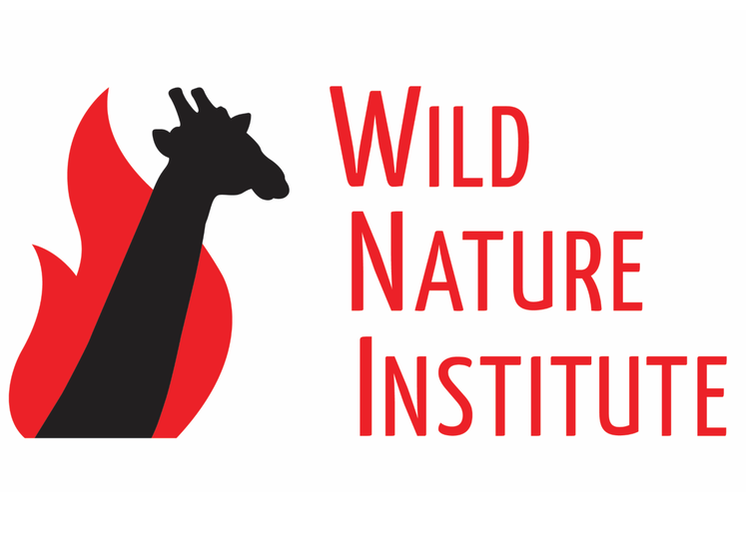Sinema Leo - Movies Today : Children's Video Storybooks In English and Swahili
To reach a broader audience and make environmental education more entertaining, we have turned our Lucky the Wildebeest and Juma the Giraffe children's books into video storybooks. The conservation and social lessons in Juma and Lucky are now accessible to every Tanzanian in English, Swahili, and Masai. The video storybook movies are shown at rural villages around Tanzania as part of our Sinema Leo Environmental Education Campaign. The Sinema Leo Campaign is building pride in Tanzania's wildlife resources among an audience that has no access to national parks, very low literacy, and little access to outside entertainment.
Sinema Leo means 'movies today' in Swahili, and refers to the portable movie projectors that brought visual entertainment to rural people in east Africa during the 20th century. The recent proliferation of smartphones, widespread cellular data networks, and solar power systems are disrupting the traditional sinema leo businesses. We capitalize on the technologies that are bringing the world to Tanzanians, by making our video storybooks available to all online. Now every Tanzanian, and everyone in the world, with access to network and a smartphone or computer can enjoy and learn, even where roads do not reach. Juma The Giraffe - Juma Twiga
Juma the Giraffe (Juma Twiga in Swahili) is a heartwarming story about how every individual is unique and special, both on the outside and on the inside.
Lucky the Wildebeest - Nyumbu Anayeitwa Bahati
The story of Lucky the Wildebeest (Nyumbu anayeitwa Bahati in Swahili) teaches ecological lessons about the migrating animals of Tanzania.
0 Comments
The Wild Nature Institute has developed giraffe-themed educational materials for school children and their teachers. The giraffe can be used to teach multiple subjects from biology, geography, and science to math and even language skills development. We developed a storybook Juma the Giraffe, an activity book Giraffe and Friends, a poster describing the anatomy and behavior of giraffes, and accompanying lesson plans and activity guides. We are providing free workshops for educators to facilitate effective use of these materials. These workshops help teachers meet the Tanzanian government mandate for environmental education in primary and secondary schools. On Saturday, Wild Nature Institute hosted its first workshop, for 26 teachers from 8 primary schools and 6 secondary schools—representing nearly 5,000 children in villages surrounding Tarangire and Lake Manyara national parks. The workshop was led by Lise Levy, a retired high school biology teacher with more than 32 years of experience in education in the USA. Teachers had a wonderful time learning the lesson plans and practicing the hands-on activities that they will use in the classroom to accompany the giraffe-themed books and posters. We are very grateful to our partners PAMS Foundation and Inyuat e MAA for helping us organize the workshop. We also had help from Tanzania Education Corporation and Asilia Africa’s Oliver’s Camp. Funding for the materials and workshop was generously provided by Sacramento Zoo, Columbus Zoo, Tulsa Zoo, Sarah Forslund Fund for Environmental Leadership, Safari West, and Upendo. We are especially grateful to David Brown, Chris Barela, Megan Strauss, and Kayla Harren for helping us to create these beautiful books and posters. Thanks also to Sophie Tremblay and Willy Lowry for taking these photos.
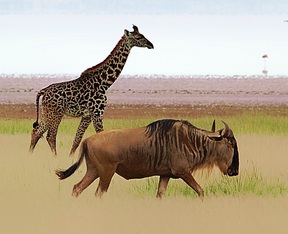 Masai giraffe and eastern white-bearded wildebeest in the Tarangire Ecosystem, Tanzania Masai giraffe and eastern white-bearded wildebeest in the Tarangire Ecosystem, Tanzania
ARUSHA, Tanzania, October 25, 2016 – Animal migrations are among the world’s most awe-inspiring natural phenomena. This complex behavior includes repeated, long-distance, seasonal movements between breeding and non-breeding sites. Unfortunately, animal migrations are an increasingly endangered phenomenon as migratory animals face the ubiquitous threats of habitat destruction and overexploitation, and the particular problem of human-created barriers. One of the best-known animal migrations is the great migration of wildebeests between Tanzania’s Serengeti plains and Kenya’s Masai Mara. Of the dozens of wildebeest migrations that existed in Africa in the 1900s less than a handful remain, and all but the Serengeti-Mara are endangered. The Tarangire wildebeest migration was the focus of a new study that measured how the seasonal presence of wildebeests in different parts of their migratory range influenced survival of resident giraffes, which do not migrate. The study, published this week in the journal Ecology and Evolution, was conducted by an international team of scientists from the USA and Tanzania. Dr. Derek Lee, of the Wild Nature Institute and lead author of the study, said, “The seasonal presence of thousands of migratory wildebeests diluted local lion predation and increased giraffe calf survival, with significant effects on giraffe population dynamics. If wildebeest populations in Tarangire continue to decline as a result of disrupted migration pathways outside Tarangire National Park and poaching for bushmeat, then giraffe populations will also be negatively impacted.” Giraffes are an iconic African species, but their numbers have dropped precipitously in recent decades and they are the latest African megaherbivore, along with rhinoceros and elephants, to become a species of conservation concern. Dr. Anne Dagg, a prominent pioneer of giraffe research and conservation said, “There are only about 100,000 giraffes living wild in Africa. We must act now to ensure that these magnificent creatures never become extinct.” The decline of the world’s animal migrations is a major environmental and economic problem, given the important ecosystem services and tourism revenues these species provide. Migrating species access high-quality food resources unavailable to non-migrants, thus migratory populations become ten times greater in number compared to residents. At those extreme numbers, migratory wildebeests exert large positive effects across the ecosystem. Dr. Tom Morrison, an expert in wildebeest migration ecology at the University of Glasgow, said, “Wildebeests drive most aspects of the ecosystem, from determining tree cover to regulating soil carbon to sustaining predators. Their loss would be catastrophic.” Tarangire National Park earns tens of millions of dollars each year for Tanzania’s tourism economy, which is the country’s largest dollar-earning economic sector. The Serengeti migration is protected in its entirety, but the Tarangire migration is mostly on unprotected lands and migratory wildebeests must leave the park to find nutritious grass growing on fertile soils for reproduction. The severing of Tarangire’s migratory route would result in population crashes because soils and grasses inside the park are infertile and can only support small numbers of wildebeests. The new study suggest other wildlife, such as giraffes, would also be negatively affected by the loss of the wildebeest migration. The Tarangire ecosystem was historically used as rangelands for livestock-keeping people like the Masai, but farming people from other parts of Tanzania have arrived recently and converted large swathes of former rangeland into farms. Proposals exist to stop wildebeest habitat from being converted to agriculture and to reduce driving speeds along two paved roads that intersect the Tarangire wildebeest migration route. Dr. Lee said, “Conserving the Tarangire wildebeest migration will have positive ripple effects throughout the ecosystem, benefitting many threatened wildlife species like giraffes, and sustaining Tanzania’s tourism economy.” Wildebeest deaths from vehicles have not been counted, but in the past year, two pregnant giraffes were killed by speeding vehicles in the wildebeest migratory pathway. Managing the dry, marginal agricultural lands outside the park for the benefit of livestock-keeping people while keeping movement pathways open for wildlife would sustainably conserve the ecology, economy, and culture of northern Tanzania’s rangelands in the Tarangire ecosystem. The biologist terrifying the US Forest Service and the timber and forest fire-fighting industries by Derek E. Lee /originally appeared on Mongabay on 29 August 2016  The U.S. Forest Service, which manages 11 million acres of public forest land in California’s Sierra Nevada, is publishing a new California spotted owl conservation strategy and also revising its forest management plans for Sierra Nevada national forests. These documents will influence how all National Forests are managed for the coming decades, and they are dangerously misguided about wildfire. Monica Bond is a wildlife biologist who has spent the past 15 years becoming an expert on spotted owls and forest fires. Earlier this month, she published a paper summarizing all existing science about what happens to spotted owls when forests burn, in the hope of averting a major US forest management policy mistake. The U.S. Forest Service, which manages 11 million acres of public forest land in California’s Sierra Nevada, is publishing a new California spotted owl conservation strategy and also revising its forest management plans for Sierra Nevada national forests. These documents will influence how all National Forests are managed for the coming decades, and they are dangerously misguided about wildfire. Bond was trained by Dr. Rocky Gutiérrez, the godfather of California spotted owl research, and she wrote her first scientific article about forest fire effects on spotted owls with Dr. Gutiérrez in 2002. “Everyone expected fire to be bad for owls, but the data showed no effect on survival, reproduction, or site occupancy,” Bond said in a phone interview. “Our data showed fire wasn’t the owl-eating monster we had all believed it to be.” But that first success didn’t satisfy Bond’s tenacious drive to learn every detail about owls and fire. She started her own independent research organization, the Wild Nature Institute, and spent the next decade and a half investigating every aspect of forest fire and spotted owl ecology. She published eight more peer-reviewed scientific papers, several popular magazine articles, and built up a network of other biologists who shared her open-minded curiosity about how nature works. Managing for spotted owl habitatSpotted owls are the main indicator species for Forest Service management practices. The status of spotted owls is supposed to tell the Forest Service how their management activities affect old-growth species, thus how well the Forest Service is doing at managing old-growth forest. More than 90 percent of the old-growth forest that once existed in California is gone, logged away during the timber rush of the 19th and 20th centuries. The last bit of old growth on Forest Service lands is mostly spotted owl habitat. In 1993, the Forest Service began managing for spotted owl habitat, implementing standards intended to reduce logging in owl territories, though cutting trees was still allowed. Since then, populations of spotted owls have crashed all across Forest Service lands in California. Conversely, spotted owl populations are stable in National Park Service lands. Both Forest Service and Park Service lands have large wildfires, but Park Service lands are not logged. Logging is clearly the driver of spotted owl declines, as tree cutting has degraded 1.2 million acres of the Forest Service land in the Sierra Nevada between 1994 and 2014. In Bond’s summary paper, she presents a data-driven narrative describing how forest fires, including big, severe fires or “megafires,” have no strong negative effects on spotted owls. For example, in the largest and most comprehensive Sierra Nevada study to date, surveys for owls in and around six megafires showed burned and unburned spotted owl sites had the same likelihood of being occupied by owls — even after about a third of the forest in their territories had burned at high severity. “The lack of effect was remarkable because we found it over and over again,” Bond said. “We kept digging into different aspects and the story didn’t change. Owls suffered much greater harm from pre- and post-fire logging, not from fire.” The summary paper explains that most breeding territories continue to support spotted owls even after high-severity fire as long as the blackened forests are not logged to remove fire-killed trees. Owls hunt for small mammals in the most severely burned forests because rodent populations boom in high-severity burn patches. The scientific results made perfect sense when examined in light of the evolutionary history of the Sierra Nevada. Forest fires in the west are almost always mixed severity, meaning they include some large patches of high-severity fire. “The increased abundance and biodiversity of plants and animals in high severity burns tells us the Sierra Nevada’s flora and fauna evolved with regular high-severity fires,” Dr. Richard Hutto of University of Montana’s College of Forestry and Conservation said in a phone interview. “High-severity fire is as natural and necessary to forest health as rain or sunshine.” However, Bond’s results were troubling to the Forest Service and the scientists on their payroll. The new California spotted owl conservation strategy was written entirely without consulting Bond. A forest oversight organization asked the Forest Service on multiple occasions to include Bond, but those requests were rejected. The “ever-escalating and unwinnable war on fire”The Forest Service gets billions of taxpayer dollars each year to fight fires, and hundreds of millions more to administer sales of trees on public lands to timber companies in the name of reducing fire risk. The Forest Service has capitalized on public fear of forest fires to bleed the US Treasury in an ever-escalating and unwinnable war on fire. The Forest Service burns through $2-4 billion taxpayer dollars every year fighting forest fires, but studies repeatedly show that weather alone drives the biggest, hottest fires each year that burn 95 percent of the fire-affected acreage and consume 85 percent of the firefighting budget. Forest Service research has shown how easy and effective it is to fireproof homes, structures, and communities by building or retrofitting with fire-resistant materials and managing vegetation within 500 feet of buildings without ever touching the forest beyond. The reality is that thinning fuels like downed trees and dry brush outside towns doesn’t stop the big, hot, weather-driven fires. The recent King Fire and Rim Fire blasted through thinned and logged lands at high severity, so what’s motivating the Forest Service plan for widespread logging? The obvious motivation of the Forest Service in vilifying forest fire and offering logging as the solution is that their budget swells under this scenario. If the public were aware that fires are natural and necessary, owl populations are not seriously harmed, and homes and communities are easily protected without logging or backwoods firefighting, the Forest Service is out of a job, or at least looking at massive budget cuts. The three studies to examine how logging affects spotted owls found clear negative impacts from fuels reduction thinning. At the same time, Bond’s summary outlines thirteen scientific papers that found no strong negative effects of high-severity fire on spotted owls. Several recent studies documented decades of spotted owl population declines on Forest Service lands that continue to be logged, but stable populations on unlogged Park Service lands. Yet the Forest Service is promoting logging under the pretense that logging will save the owls from fire. There is a saying, “Where California goes, so goes the nation.” US forest policy for the next few decades is about to be written. It promotes widespread logging on public, taxpayer-owned forests. This logging is called fuels reduction or ecological restoration to disguise the greed behind the policy. The logging will be expensive, ineffective, and ecologically damaging, and it will be paid for by the taxpayers of the USA. Bond concluded: "Our California forests produce $9.5 billion in water supply annually. California’s forests also support 38,000 outdoor recreation-related jobs, and only 2,000 timber and biomass jobs each year. In 2011, the last time the agency compared the GDP impact of all its multiple uses, recreation had a $13 billion impact on GDP, vs. forest products’ impact of $3 billion. The vast majority of California’s timber comes from private timber company lands already, so let’s stop logging on public lands. We must demand no more logging on US Forest Service lands until spotted owl populations recover. Spend that money on fire-proofing homes instead.” CITATION
The Wild Nature Institute's goal is to ensure that research on forest fire, insect outbreaks, and wildlife is translated into improved forest-protection policies and effective forest-management activities that conserve snag forests, also called complex early seral forest: a critical, scarce, and misunderstood wildlife habitat.
A Video Portraying the Natural Beauty of Forests
|
Science News and Updates From the Field from Wild Nature Institute.
All Photos on This Blog are Available as Frame-worthy Prints to Thank Our Generous Donors.
Email Us for Details of this Offer. Archives
July 2024
|
|
Mailing Address:
Wild Nature Institute PO Box 44 Weaverville, NC 28787 Phone: +1 415 763 0348 Email: [email protected] |
|


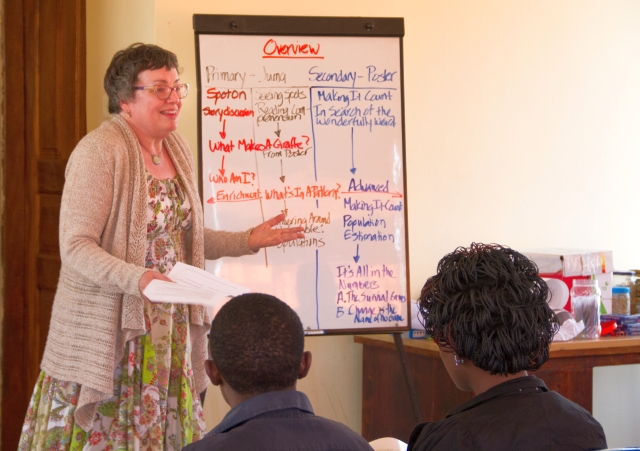




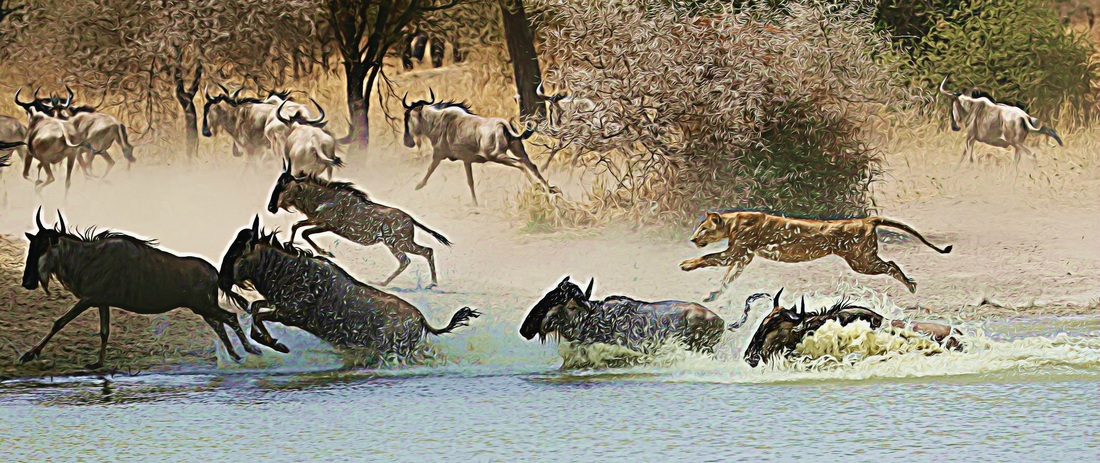
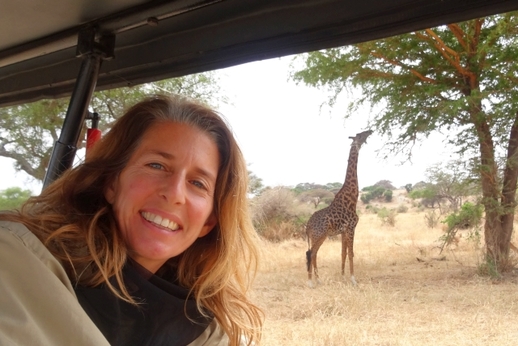
 RSS Feed
RSS Feed
